SA-3 Goa on:
[Wikipedia]
[Google]
[Amazon]
The S-125 ''Neva/Pechora'' (,
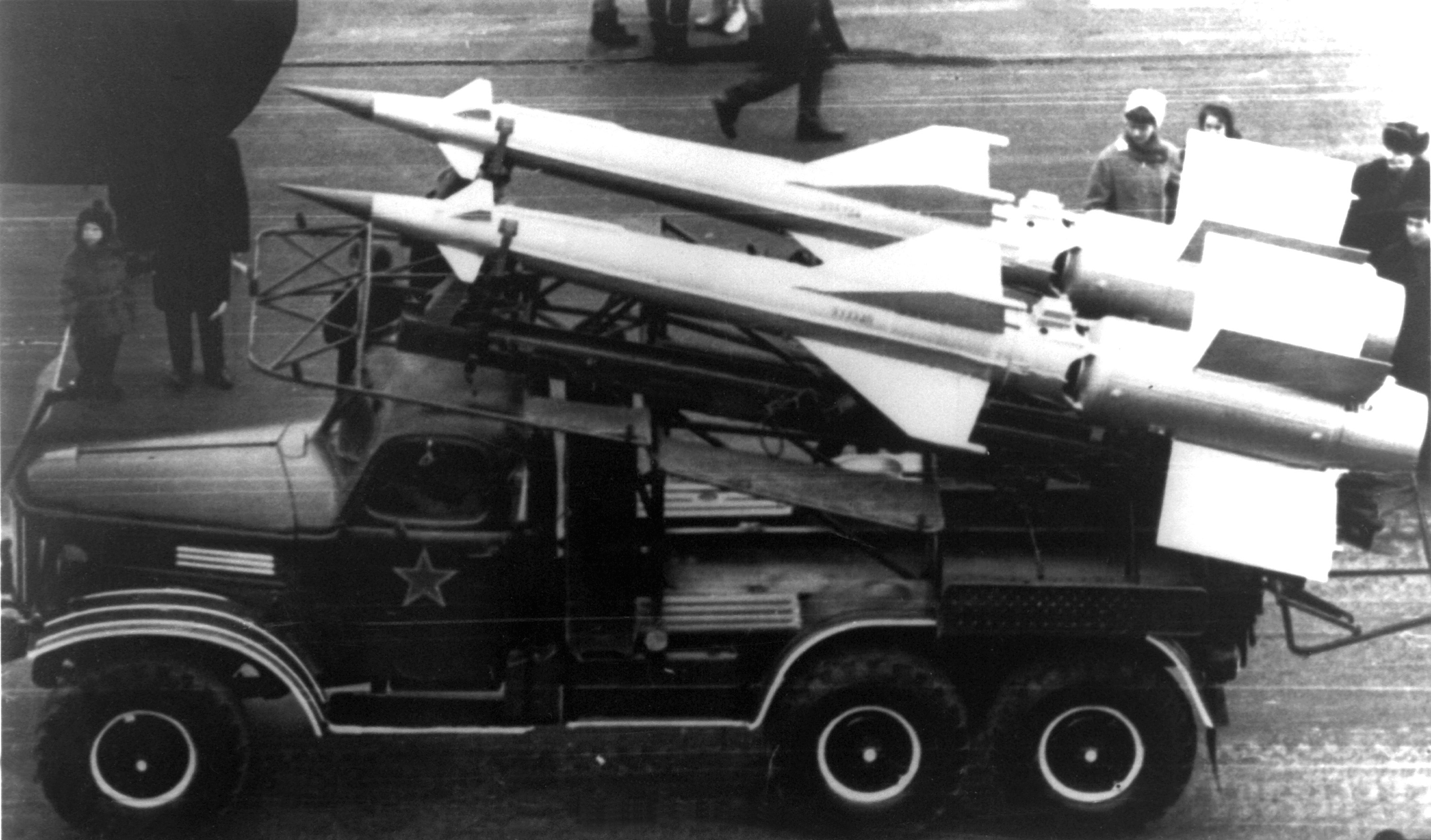
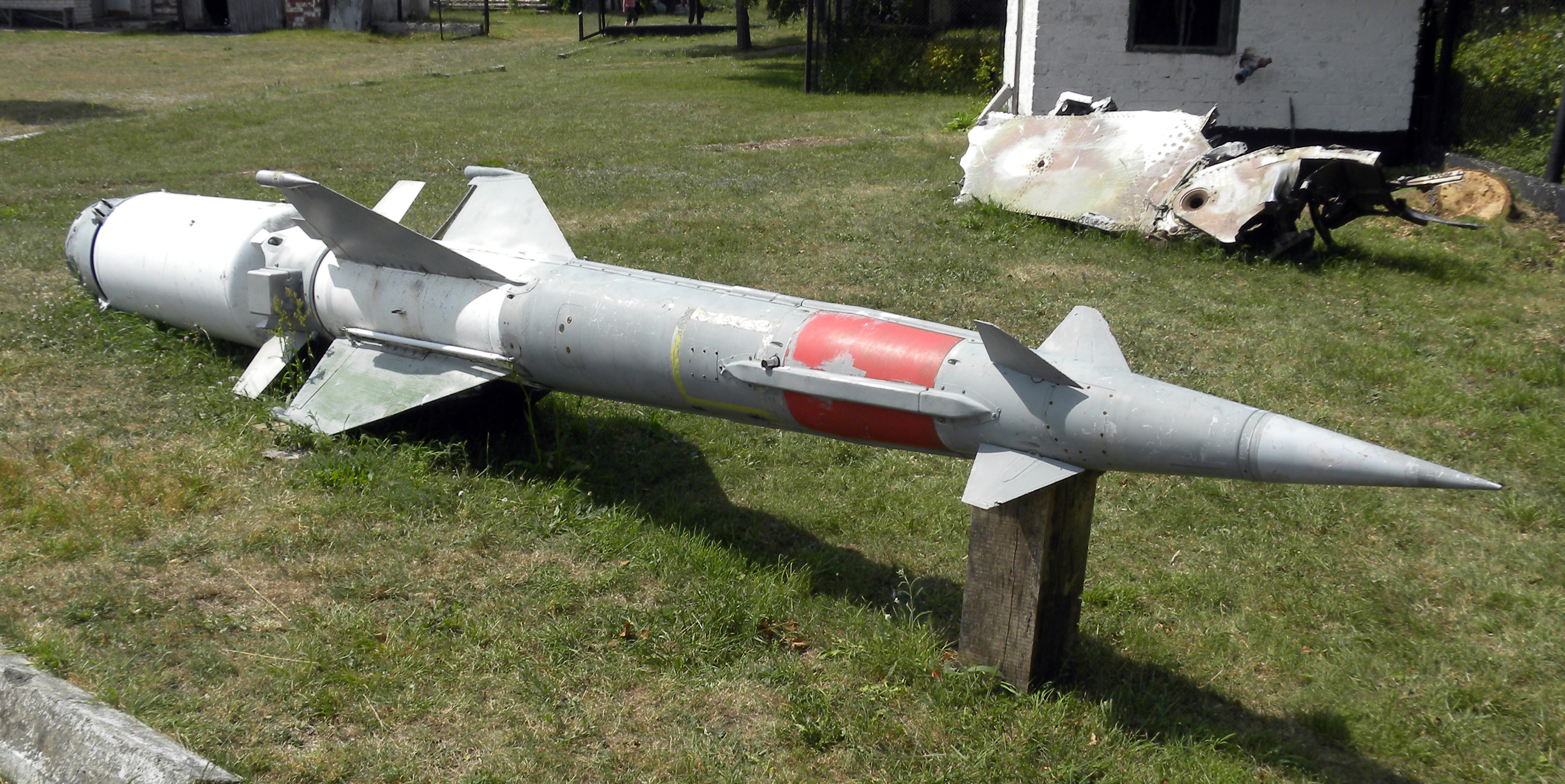 The S-125 was first deployed between 1961 and 1964 around
The S-125 was first deployed between 1961 and 1964 around
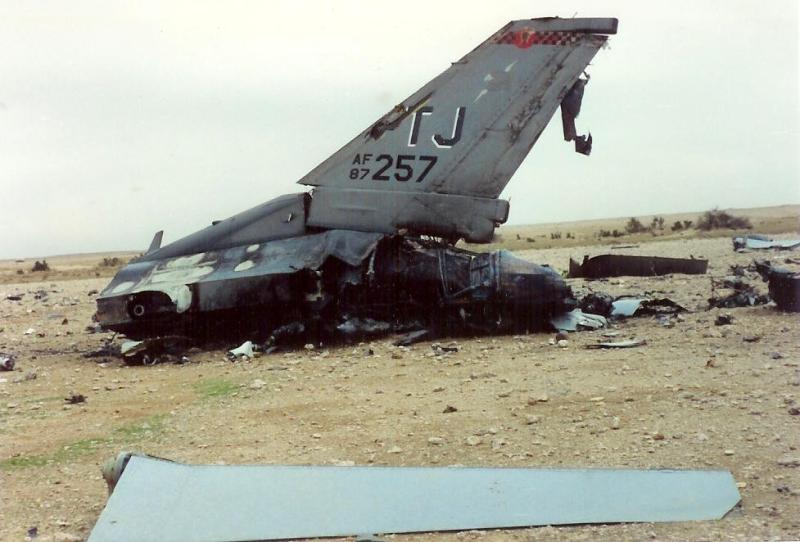 During the Package Q Strike against downtown Baghdad on 19 January 1991, a USAF
During the Package Q Strike against downtown Baghdad on 19 January 1991, a USAF 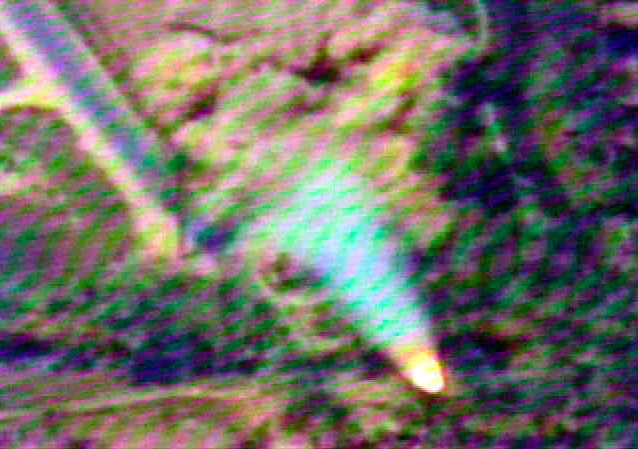
"Holloman commander recalls being shot down in Serbia"
. ''F-16.net'', 7 February 2007. Retrieved: 16 May 2008.
 Work on a naval version M-1 Volna (SA-N-1) started in 1956, along with work on a land version. It was first mounted on a rebuilt Kotlin class destroyer (Project 56K) ''Bravyi'' and tested in 1962. In the same year, the system was accepted. The basic missile was a V-600 (or 4K90) (range: from 4 to 15 km, altitude: from 0.1 to 10 km). Fire control and guidance is carried out by 4R90 Yatagan radar, with five
Work on a naval version M-1 Volna (SA-N-1) started in 1956, along with work on a land version. It was first mounted on a rebuilt Kotlin class destroyer (Project 56K) ''Bravyi'' and tested in 1962. In the same year, the system was accepted. The basic missile was a V-600 (or 4K90) (range: from 4 to 15 km, altitude: from 0.1 to 10 km). Fire control and guidance is carried out by 4R90 Yatagan radar, with five

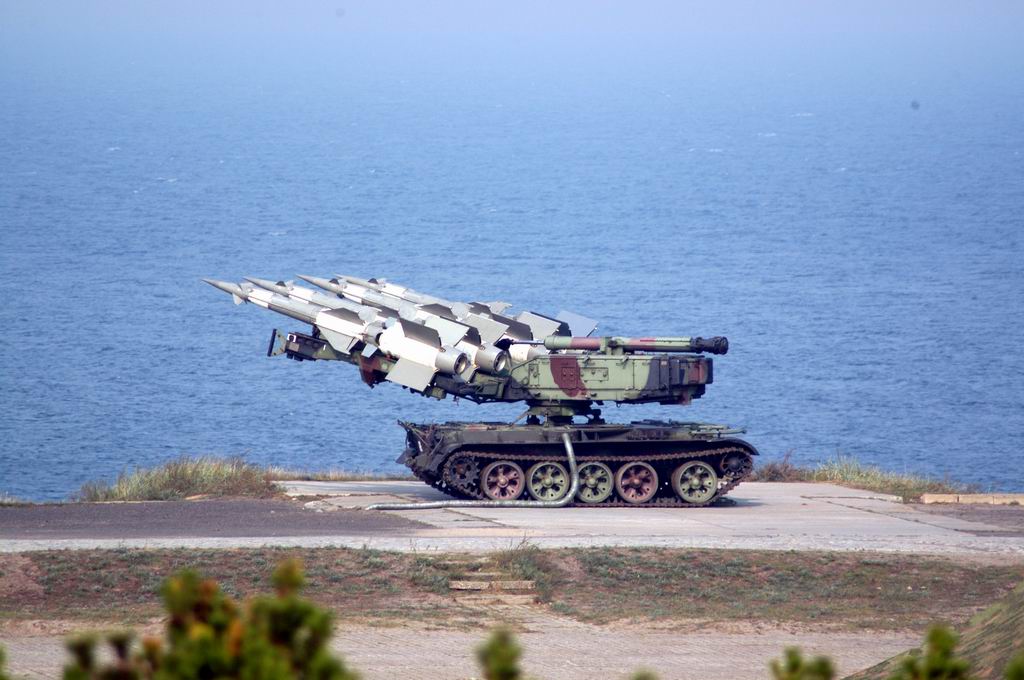 Since Russia replaced all of its S-125 sites with S-300 systems, they decided to upgrade the S-125 systems being removed from service to make them more attractive to export customers.
* Released in 2000, the Pechora-2 version features better range, multiple target engagement ability and a higher
Since Russia replaced all of its S-125 sites with S-300 systems, they decided to upgrade the S-125 systems being removed from service to make them more attractive to export customers.
* Released in 2000, the Pechora-2 version features better range, multiple target engagement ability and a higher
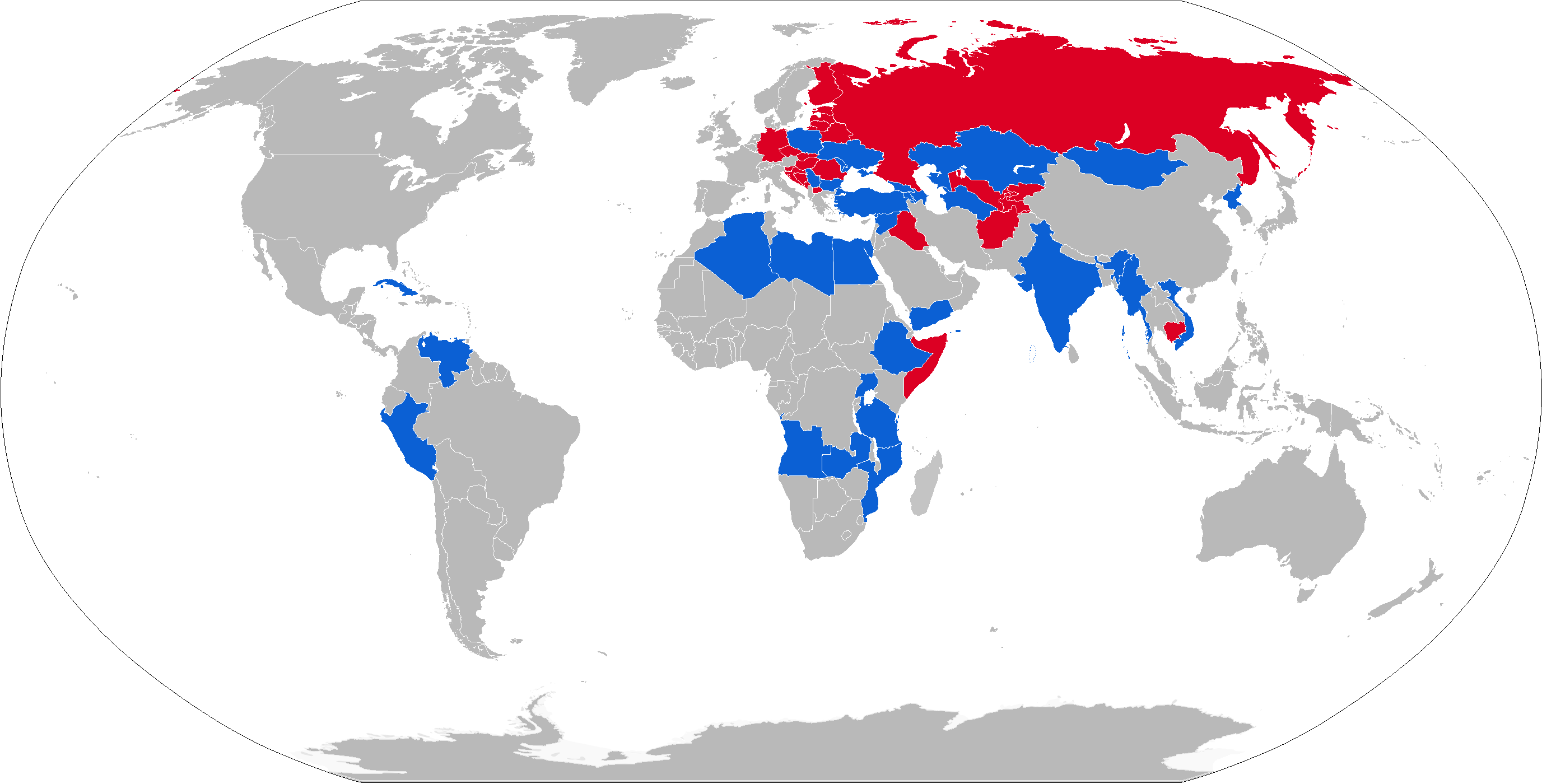

Image:FlatFace.JPG, P-15 "Flat Face" radar.
Image:SNR-125 2.jpg, SNR-125 "Low Blow" radar.
Image:PRV-11 "Side Net" radar.jpg, PRV-11 "Side Net" radar.
Description of C-125 on the producer site
in Russian
Jane's Defence news on Egyptian S-125 upgrade, April 2006
Defencetalk on Egyptian S-125 upgrade, October 2006
S-125M1 Neva (SA-3b Goa) SAM Simulator
{{DEFAULTSORT:S-125 Neva Pechora Cold War surface-to-air missiles of the Soviet Union Naval surface-to-air missiles Surface-to-air missiles of the Soviet Union Almaz-Antey products Military equipment introduced in the 1960s
NATO reporting name
NATO uses a system of code names, called reporting names, to denote military aircraft and other equipment used by post-Soviet states, former Warsaw Pact countries, China, and other countries. The system assists military communications by providi ...
SA-3 ''Goa'') is a Soviet surface-to-air missile
A surface-to-air missile (SAM), also known as a ground-to-air missile (GTAM) or surface-to-air guided weapon (SAGW), is a missile designed to be launched from the ground or the sea to destroy aircraft or other missiles. It is one type of anti-ai ...
system that was designed by Aleksei Isaev to complement the S-25 and S-75. It has a shorter effective range and lower engagement altitude
Altitude is a distance measurement, usually in the vertical or "up" direction, between a reference datum (geodesy), datum and a point or object. The exact definition and reference datum varies according to the context (e.g., aviation, geometr ...
than either of its predecessors and also flies slower, but due to its two-stage design it is more effective against more maneuverable targets. It is also able to engage lower flying targets than the previous systems, and being more modern it is much more resistant to ECM than the S-75. The 5V24 (V-600) missiles reach around Mach
The Mach number (M or Ma), often only Mach, (; ) is a dimensionless quantity in fluid dynamics representing the ratio of flow velocity past a Boundary (thermodynamic), boundary to the local speed of sound.
It is named after the Austrian physi ...
3 to 3.5 in flight, both stages powered by solid fuel
Solid fuel refers to various forms of solid material that can be burnt to release energy, providing heat and light through the process of combustion. Solid fuels can be contrasted with liquid fuels and gaseous fuels. Common examples of solid fu ...
rocket motor
A rocket engine is a reaction engine, producing thrust in accordance with Newton's third law by ejecting reaction mass rearward, usually a high-speed jet of high-temperature gas produced by the combustion of rocket propellants stored inside t ...
s. The S-125, like the S-75, uses radio command guidance. The naval version of this system has the NATO reporting name SA-N-1 Goa and original designation M-1 Volna (Russian Волна – ''wave'').
Operational history
Soviet Union

 The S-125 was first deployed between 1961 and 1964 around
The S-125 was first deployed between 1961 and 1964 around Moscow
Moscow is the Capital city, capital and List of cities and towns in Russia by population, largest city of Russia, standing on the Moskva (river), Moskva River in Central Russia. It has a population estimated at over 13 million residents with ...
, augmenting the S-25 and S-75 sites already ringing the city, as well as in other parts of the USSR
The Union of Soviet Socialist Republics. (USSR), commonly known as the Soviet Union, was a List of former transcontinental countries#Since 1700, transcontinental country that spanned much of Eurasia from 1922 until Dissolution of the Soviet ...
. In 1964, an upgraded version of the system, the S-125M "Neva-M" and later S-125M1 "Neva-M1" was developed. The original version was designated SA-3A by the US DoD and the new Neva-M named SA-3B and (naval) SA-N-1B. The Neva-M introduced a redesigned booster and an improved guidance system. The S-125 was not used against U.S. forces in Vietnam
Vietnam, officially the Socialist Republic of Vietnam (SRV), is a country at the eastern edge of mainland Southeast Asia, with an area of about and a population of over 100 million, making it the world's List of countries and depende ...
, because the Soviets feared that China (after the souring of Sino-Soviet relations in 1960), through which most, if not all of the equipment meant for North Vietnam had to travel, would try to copy the missile.
Angolan Civil War
The FAPA-DAA acquired a significant number of S-125s, and these were encountered during the first strike ever flown by SAAF Mirage F.1s against targets in Angola – in June 1980. While the SAAF reported two aircraft were damaged by SAMs during this action, Angola claimed to have shot down four. On 7 June 1980, while attackingSWAPO
The South West Africa People's Organisation (SWAPO ; , SWAVO; , SWAVO), officially known as the SWAPO Party of Namibia, is a political party and former independence movement in Namibia (formerly South West Africa). Founded in 1960, it has been ...
's Tobias Haneko Training Camp during Operation Sceptic (Smokeshell), SAAF Major Frans Pretorius and Captain IC du Plessis, both flying Mirage F.1s, were hit by S-125s. Pretorius's aircraft was hit in a fuel line and he had to perform a deadstick landing at AFB Ondangwa. Du Plessis's aircraft sustained heavier damage and had to divert to Ruacana forward airstrip, where he landed with only the main undercarriage extended. Both aircraft were repaired and returned to service.
Middle East
The Soviets supplied several S-125s to the Arab states in the late 1960s and 1970s, most notably Egypt and Syria. The S-125 saw extensive action during theWar of Attrition
The War of Attrition (; ) involved fighting between Israel and Egypt, Jordan, the Palestine Liberation Organisation (PLO) and their allies from 1967 to 1970.
Following the 1967 Six-Day War, no serious diplomatic efforts were made to resolve t ...
and the Yom Kippur War
The Yom Kippur War, also known as the Ramadan War, the October War, the 1973 Arab–Israeli War, or the Fourth Arab–Israeli War, was fought from 6 to 25 October 1973 between Israel and a coalition of Arab world, Arab states led by Egypt and S ...
. During the latter, the S-125, along with the S-75 Dvina and 2K12 Kub
The 2K12 ''"Kub"'' (; English: 'cube') (NATO reporting name: SA-6 "Gainful") mobile surface-to-air missile system is a Soviet Union, Soviet low to medium-level air defence system designed to protect ground forces from air attack. ''2К12'' is ...
, formed the backbone of the Egyptian air defence network. In Egypt, March–July 1970 Soviet battalions of S-125 17 Shooting (35 missiles) shot down nine Israeli and one Egyptian planes. General Muhammed Ali Hafez (Air defense forces commander in the Egyptian Army) was the first man in the world to reuse the launched missiles in creating new ones . Israel recognized the 5 F-4 Phantoms in 1970 (1 more was W/O) and in 1973 another 6.
Persian Gulf War
 During the Package Q Strike against downtown Baghdad on 19 January 1991, a USAF
During the Package Q Strike against downtown Baghdad on 19 January 1991, a USAF F-16
The General Dynamics F-16 Fighting Falcon is an American single-engine supersonic multirole fighter aircraft originally developed by General Dynamics for the United States Air Force (USAF). Designed as an air superiority day fighter, it e ...
(serial 87-257) was shot down. The aircraft was struck by a S-125 just south of Baghdad. The pilot, Major Jeffrey Scott Tice, ejected safely but became a POW. It was the 8th combat loss and the first daylight raid over Baghdad.

Kosovo War
A Yugoslav Army 250th Air Defense Missile Brigade 3rd battery equipped with S-125 system shot down a F-117 Nighthawk stealth attack aircraft on March 27, 1999 during theKosovo War
The Kosovo War (; sr-Cyrl-Latn, Косовски рат, Kosovski rat) was an armed conflict in Kosovo that lasted from 28 February 1998 until 11 June 1999. It ...
(the only recorded downing of a stealth aircraft) near village Budjanovci, about 45 km from Belgrade. The pilot LT.COL. Darrell Patrick Zelko ejected and was later found by US search and rescue forces. An S-125 also shot down a NATO F-16
The General Dynamics F-16 Fighting Falcon is an American single-engine supersonic multirole fighter aircraft originally developed by General Dynamics for the United States Air Force (USAF). Designed as an air superiority day fighter, it e ...
fighter on May 2 (its pilot; Lt. Col David L. Goldfein, the commander of 555th Fighter Squadron, managed to eject and was later rescued by a combat search-and-rescue (CSAR) mission).Roberts, Chris"Holloman commander recalls being shot down in Serbia"
. ''F-16.net'', 7 February 2007. Retrieved: 16 May 2008.
Syrian Civil War
On 17 March 2015, a USMQ-1 Predator
The General Atomics MQ-1 Predator (often referred to as the Predator drone) is an American remotely piloted aircraft (RPA) built by General Atomics that was used primarily by the United States Air Force (USAF) and Central Intelligence Agency ...
drone was shot down by a Syrian Air Defense Force S-125 missile while on an intelligence flight near the coastal town of Latakia.
In December 2016, ISIS forces captured three S-125 launchers after they retook Palmyra from Syrian government troops.
On April 14, 2018, American, British, and French forces launched a barrage of 103 air-to-surface and cruise missiles targeting eight Syrian military sites. The Russian military claimed that thirteen S-125 missiles launched in response destroyed five incoming missiles. However, the American Department of Defense stated no Allied missiles were shot down.
Russo-Ukrainian War
On 6 December 2022, a photo of Polish variant Newa-SC in Ukrainian service, likely made that summer, emerged in media during theRussian invasion of Ukraine
On 24 February 2022, , starting the largest and deadliest war in Europe since World War II, in a major escalation of the Russo-Ukrainian War, conflict between the two countries which began in 2014. The fighting has caused hundreds of thou ...
. Until then, there had been no info on supplying Newa-SC to Ukraine.
India
India used the S-125 missiles to take down several Pakistani swarm drones and loitering munitions with high precision duringOperation Sindoor
Operation or Operations may refer to:
Arts, entertainment and media
* ''Operation'' (game), a battery-operated board game that challenges dexterity
* Operation (music), a term used in musical set theory
* ''Operations'' (magazine), Multi-Man ...
.
Description
The S-125 is somewhat mobile, an improvement over the S-75 system. The missiles are typically deployed on fixed turrets containing two or four but can be carried ready-to-fire onZIL
OJSC AMO ZiL, known fully as the Public Joint-Stock Company – Likhachov Plant () and more commonly called ZiL (, was a major Russian automobile, truck, military vehicle, and heavy equipment manufacturer that was based in Moscow.
The last ZiL ...
trucks in pairs. Reloading the fixed launchers takes a few minutes.
Missile
The S-125 system uses two different missile versions and variants. *V-600 (or 5V24) has the smallest warhead with 60 kg of high explosive. It has a range of about 15 km. *V-601 (or 5V27): the upgraded S-125M (1970) system uses the 5V27 missile, with a length of 6.09 m, a wing span of 2,200 mm and a body diameter of 375 mm. This missile weighs 953 kg at launch, and has a 70 kg warhead containing 33 kg of HE and 4,500 fragments. The minimum range is 3.5 km, and the maximum is 35 km (with the Pechora 2A). The intercept altitudes are between 100 m and 18 km. Other sources claim the intercept altitudes between 20 m and 14 km. The minimum range is 2.5 km, and the maximum is 22 km *5V27D: the S-125M1 (1978) system uses the 5V27D missile. In the early 1980s, each system used one or two radar simulators to survive antiradar missiles.Radars
The launchers are accompanied by a command building or truck and three primaryradar
Radar is a system that uses radio waves to determine the distance ('' ranging''), direction ( azimuth and elevation angles), and radial velocity of objects relative to the site. It is a radiodetermination method used to detect and track ...
systems:
* P-15 radar (NATO codename "Flat Face") or P-15M(2) (NATO codename "Squat Eye") 380 kW C-band target acquisition radar (also used by the 2K12 Kub
The 2K12 ''"Kub"'' (; English: 'cube') (NATO reporting name: SA-6 "Gainful") mobile surface-to-air missile system is a Soviet Union, Soviet low to medium-level air defence system designed to protect ground forces from air attack. ''2К12'' is ...
and 9K33 Osa
The 9K33 ''Osa'' (; English: "wasp"; NATO reporting name SA-8 ''Gecko'') is a highly mobile, low-altitude, short-range tactical surface-to-air missile system developed in the Soviet Union in the 1960s and fielded in 1972. Its export version nam ...
, range 250 km/155 miles)
* SNR-125 (NATO codename "Low Blow") 250 kW I/D-band tracking, fire control and guidance radar (range 40 km/25 miles, second mode 80 km/50 miles) Its parts: An UV-10, 3 cm wavelength, narrow beam transmitter/receiver antenna; 2 pcs of UV-11, 3 cm wavelength, wide beam receiver antenna for target tracking, an UV-12, decimeter wavelength, missile command transmitter antenna and a 9Sh33A camera (optical channel).
The P-15 is mounted on a van (P-15M(2) on a taller mast for better performance against low-altitude targets) and also an IFF (Identifies Friend or Foe), SNR-125 on a trailer and PRV-11 on a box-bodied trailer.
Variants and upgrades
Naval version
 Work on a naval version M-1 Volna (SA-N-1) started in 1956, along with work on a land version. It was first mounted on a rebuilt Kotlin class destroyer (Project 56K) ''Bravyi'' and tested in 1962. In the same year, the system was accepted. The basic missile was a V-600 (or 4K90) (range: from 4 to 15 km, altitude: from 0.1 to 10 km). Fire control and guidance is carried out by 4R90 Yatagan radar, with five
Work on a naval version M-1 Volna (SA-N-1) started in 1956, along with work on a land version. It was first mounted on a rebuilt Kotlin class destroyer (Project 56K) ''Bravyi'' and tested in 1962. In the same year, the system was accepted. The basic missile was a V-600 (or 4K90) (range: from 4 to 15 km, altitude: from 0.1 to 10 km). Fire control and guidance is carried out by 4R90 Yatagan radar, with five parabolic antenna
A parabolic antenna is an antenna that uses a parabolic reflector, a curved surface with the cross-sectional shape of a parabola, to direct the radio waves. The most common form is shaped like a dish and is popularly called a dish antenna or p ...
s on a common head. Only one target can be engaged at a time (or two, for ships fitted with two Volna systems). In case of emergency, Volna could be also used against naval targets, due to short response time.
The first launcher type was the two-missile ZIF-101, with a magazine for 16 missiles. In 1963 an improved two-missile launcher, ZIF-102, with a magazine for 32 missiles, was introduced to new ship classes. In 1967 Volna systems were upgraded to Volna-M (SA-N-1B) with V-601 (4K91) missiles (range: 4–22 km, altitude: 0.1–14 km).
In 1974 - 1976 some systems were modernized to Volna-P standard, with an additional TV target tracking channel and better resistance to jamming. Later, improved V-601M missiles were introduced, with lower minimal attack altitude against aerial targets (system Volna-N).
Some Indian frigates also carry the M-1 Volna system.
Modern upgrades

 Since Russia replaced all of its S-125 sites with S-300 systems, they decided to upgrade the S-125 systems being removed from service to make them more attractive to export customers.
* Released in 2000, the Pechora-2 version features better range, multiple target engagement ability and a higher
Since Russia replaced all of its S-125 sites with S-300 systems, they decided to upgrade the S-125 systems being removed from service to make them more attractive to export customers.
* Released in 2000, the Pechora-2 version features better range, multiple target engagement ability and a higher probability of kill {{No footnotes, date=July 2024
Computer games, simulations, mathematical model, models, and operations research programs often require a mechanism to determine statistically how likely the engagement between a weapon and a target will result in a sa ...
(PK). The launcher is moved onto a truck allowing much shorter relocation times.
* It is also possible to fire the Pechora-2M system against cruise missiles
A cruise missile is an unmanned self-propelled guided missile that sustains flight through aerodynamic lift for most of its flight path. Cruise missiles are designed to deliver a large payload over long distances with high precision. Modern cru ...
. Deployment time 25 minutes, protected from the active interference, and anti-radiation missiles (total in practical shooting)
Early warning radar is replaced by anti-stealth radar Kasta 2E2, target distance at 2.5–32 km, target altitude - 0.02–20 km, missile launchers can be positioned at up to 10 kilometers away from the control center. Speed up to 1000 m/s (target), Used rocket 5V27DE, by weight the warhead + 50% range of flight splinters + 350%. Probability of hitting the target 1st rocket: at a distance up to 25 km - 0,72-0,99,
detection range with the radar cross section = 2 sq meters about 100 km, with RCS = 0.15 sq m - about 50 km, with no interference. When using active jamming - 40 km. ADMS "Pechora-2M" has the ability to interfacing with higher level command post and radar remote using telecode channels. Is equally effective at any time during the day and at night (optical location, daytime and nighttime, and also thermal imager) was awarded a contract to overhaul Egypt's S-125 SAM system. These refurbished weapons have been reintroduced as the S-125 Pechora 2M.
* In 2001, Poland began offering an upgrade to the S-125 known as the Newa SC. This replaced many analogue components with digital
Digital usually refers to something using discrete digits, often binary digits.
Businesses
*Digital bank, a form of financial institution
*Digital Equipment Corporation (DEC) or Digital, a computer company
*Digital Research (DR or DRI), a software ...
ones for improved reliability and accuracy. This upgrade also involves mounting the missile launcher on a WZT-1 WZT (''Wóz Zabezpieczenia Technicznego'' – armoured recovery vehicle) was a Polish post-World War II armoured recovery vehicle series. It consists of five versions.
The first two, WZT-1 and WZT-2 were built on T-55/T-55A hull, the WZT-3 was bui ...
tank chassis (a TEL), greatly improving mobility and also adds IFF
In logic and related fields such as mathematics and philosophy, "if and only if" (often shortened as "iff") is paraphrased by the biconditional, a logical connective between statements. The biconditional is true in two cases, where either both ...
capability and data links. Radar is mounted on an 8-wheeled heavy truck chassis (formerly used for Scud
A Scud missile is one of a series of tactical ballistic missiles developed by the Soviet Union during the Cold War. It was exported widely to both Second and Third World countries. The term comes from the NATO reporting name attached to the m ...
launchers).
Serbia
, image_flag = Flag of Serbia.svg
, national_motto =
, image_coat = Coat of arms of Serbia.svg
, national_anthem = ()
, image_map =
, map_caption = Location of Serbia (gree ...
n modifications include terminal/camera homing from radar base.
Cuba also developed a similar upgrade to the Polish one, which was displayed in La Habana
Havana (; ) is the capital and largest city of Cuba. The heart of La Habana Province, Havana is the country's main port and commercial center.warhead
A warhead is the section of a device that contains the explosive agent or toxic (biological, chemical, or nuclear) material that is delivered by a missile, rocket (weapon), rocket, torpedo, or bomb.
Classification
Types of warheads include:
*E ...
, fuse and electronics. There is an added laser
A laser is a device that emits light through a process of optical amplification based on the stimulated emission of electromagnetic radiation. The word ''laser'' originated as an acronym for light amplification by stimulated emission of radi ...
/infra-red
Infrared (IR; sometimes called infrared light) is electromagnetic radiation (EMR) with wavelengths longer than that of visible light but shorter than microwaves. The infrared spectral band begins with the waves that are just longer than those of ...
tracking device to allow launching of missiles without the use of the radar.
There is also a version of the S-125 available from Russia with the warhead replaced with telemetry
Telemetry is the in situ collection of measurements or other data at remote points and their automatic transmission to receiving equipment (telecommunication) for monitoring. The word is derived from the Greek roots ''tele'', 'far off', an ...
instrumentation, for use as target drones.
* In October 2010, Ukrainian Aerotechnica announced a modernized version of S-125 named S-125-2D Pechora. As of 2018 according to the UkrOboronProm, the S-125 surface-to-air missile underwent an integrated modification of all elements, including modernization of missiles, as well as the use of a new radar station built on solid-state elements. The distance of the Ukrainian S-125 modernization's engagement area, 40 km, is greater than that of the Russian one.
* The Vietnamese state-owned agency Viettel Aerospace Institute has unveiled a modernization version of S-125, designated as the S-125-VT. It is expected to enter Vietnamese Air Defence operation in the near future.
Operators


Current
* − 12 S-125M Pechora-M and 24 S-125M1 Pechora-M1 batteries as of 2024 * − 12 S-125M1 Pechora-M1 batteries as of 2024 * * − 24 S-125-2TM Pechora-2TM batteries as of 2024 * − S-125M Neva-M * − S-125M/M1 Pechora M/M1, some Pechora M1s are mounted onT-55
The T-54 and T-55 tanks are a series of Soviet medium tanks introduced in the years following the Second World War. The first T-54 prototype was completed at Nizhny Tagil by the end of 1945.Steven Zaloga, T-54 and T-55 Main Battle Tanks 1944–2 ...
tank chassis
* − 40 S-125-2M Pechora-2M and 120 S-125M Pechora-M batteries as of 2024
* − 4 S-125M1 Pechora-M1 batteries as of 2024
* − S-125M Pechora-M
* − 3 S-125-1T batteries as of 2024
* − 8 S-125M1 Neva-M1 batteries as of 2024
* − 6 S-125M Pechora-M batteries as of 2024. Serviceability doubtful
* − 3 S-125M1 Neva-M1 batteries as of 2024
* − 2+ S-125-2M Pechora-2M batteries as of 2024
* − S-125-2M Pechora-2M
* − 20 S-125M1 Pechora-M1 batteries as of 2024. Serviceability doubtful
*
* − 14 S-125 Newa SC batteries as of 2024
* − 6 S-125M Neva-M batteries as of 2024
* − S-125-2M Pechora-2M and S-125M/M1 Pechora-M/M1
* − 16 S-125 Pechora batteries as of 2024. Serviceability doubtful
* − 3 S-125 Pechora-2M and 5 S-125M1 Neva-M1 batteries as of 2024
* − 4 S-125 Pechora-2M, 12 S-125M1 Neva-M1, and some S-125-2BM Pechora batteries as of 2024
* − In 2022, Ukraine received an undisclosed number of S-125 Newa SC systems from Poland
* − 4 S-125-2M Pechora-2M and 10 S-125M1 Neva-M1 batteries as of 2024
* − 44 S-125 Pechora-2M batteries as of 2024
* − 30 S-125TM Pechora-2TM and 21 S-125M Pechora-M batteries as of 2024. The S-125-VT modernized variant was reported to be in service in July 2024
* − 6 S-125M Pechora-M batteries as of 2024
Former
* − 12 launchers in 1992 * * * − 120 launchers in 1992, passed on to successor states * * * − 12 launchers in 1992, designated as the SAM-79 * * − 24 launchers in 1992 * * − 2 batteries captured from the Syrian Army in 2016, non-operational * − 132 launchers prior to the2011 Libyan Civil War
The Libyan civil war, also known as the First Libyan Civil War and Libyan Revolution, was an armed conflict in 2011 in the North African country of Libya that was fought between forces loyal to Colonel Muammar Gaddafi and rebel groups that were ...
* − 12 launchers in 1992, in 2014, Mali's remaining stockpile of V-601 missiles was disposed of
* − 12 launchers in 2002
*
* − 100 launchers in 2002
* − 16 launchers in 2002, passed on to Serbia
*
* − 8 launchers in 1991
*
* − 1,250 launchers in 1991, passed on to successor states
*
* Tigray People's Liberation Front
The Tigray People's Liberation Front (TPLF; ), also known as the Tigrayan People's Liberation Front, is a left-wing Ethnic nationalism, ethnic nationalist, paramilitary group, and the former ruling party of Ethiopia. It was classified as a ter ...
* − 12 launchers in 2002, most were upgraded to the Pechora-2M standard
* − 140 launchers in 1992
Gallery of radars
References
Citations
Bibliography
* * * * * *External links
Description of C-125 on the producer site
in Russian
Jane's Defence news on Egyptian S-125 upgrade, April 2006
Defencetalk on Egyptian S-125 upgrade, October 2006
S-125M1 Neva (SA-3b Goa) SAM Simulator
{{DEFAULTSORT:S-125 Neva Pechora Cold War surface-to-air missiles of the Soviet Union Naval surface-to-air missiles Surface-to-air missiles of the Soviet Union Almaz-Antey products Military equipment introduced in the 1960s